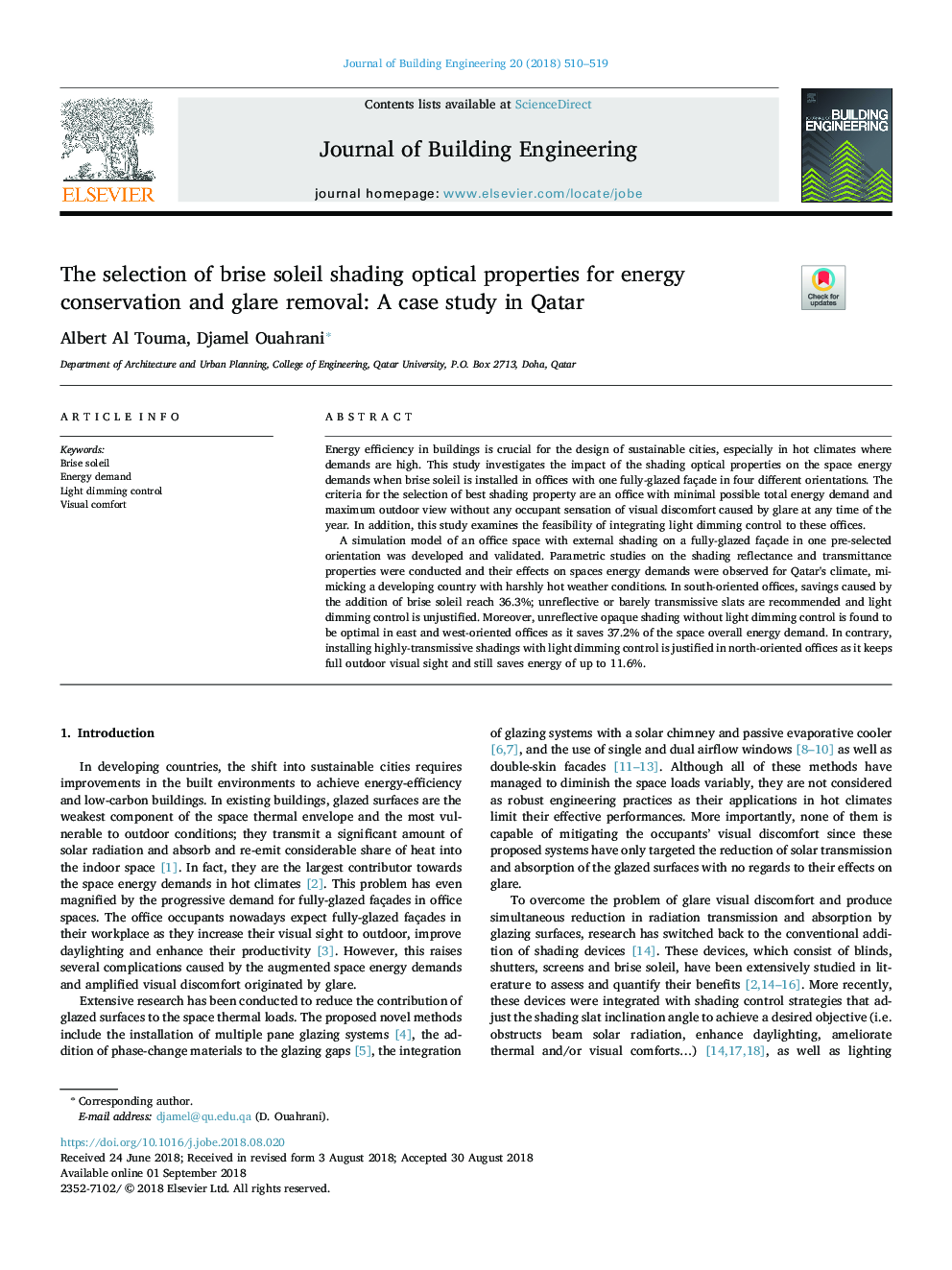| Article ID | Journal | Published Year | Pages | File Type |
|---|---|---|---|---|
| 11001095 | Journal of Building Engineering | 2018 | 10 Pages |
Abstract
A simulation model of an office space with external shading on a fully-glazed façade in one pre-selected orientation was developed and validated. Parametric studies on the shading reflectance and transmittance properties were conducted and their effects on spaces energy demands were observed for Qatar's climate, mimicking a developing country with harshly hot weather conditions. In south-oriented offices, savings caused by the addition of brise soleil reach 36.3%; unreflective or barely transmissive slats are recommended and light dimming control is unjustified. Moreover, unreflective opaque shading without light dimming control is found to be optimal in east and west-oriented offices as it saves 37.2% of the space overall energy demand. In contrary, installing highly-transmissive shadings with light dimming control is justified in north-oriented offices as it keeps full outdoor visual sight and still saves energy of up to 11.6%.
Keywords
Related Topics
Physical Sciences and Engineering
Engineering
Civil and Structural Engineering
Authors
Albert Al Touma, Djamel Ouahrani,
